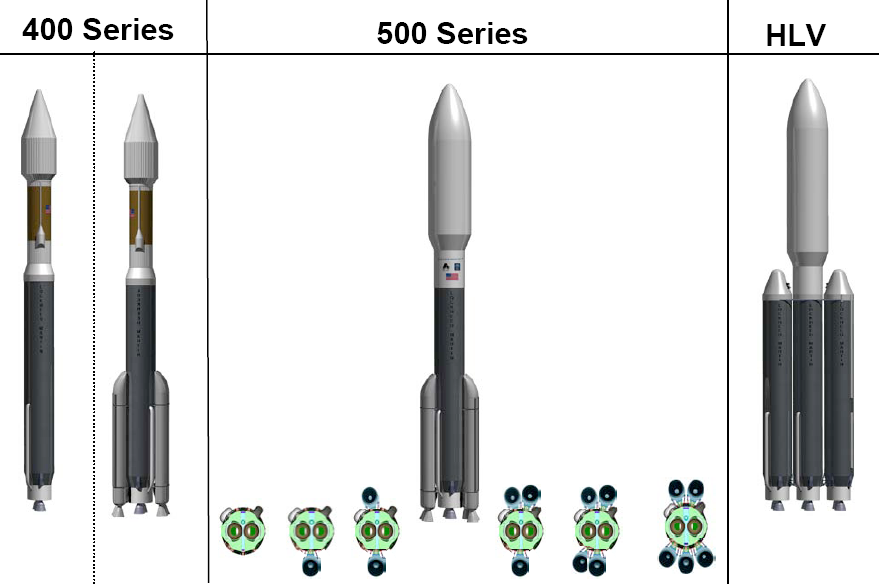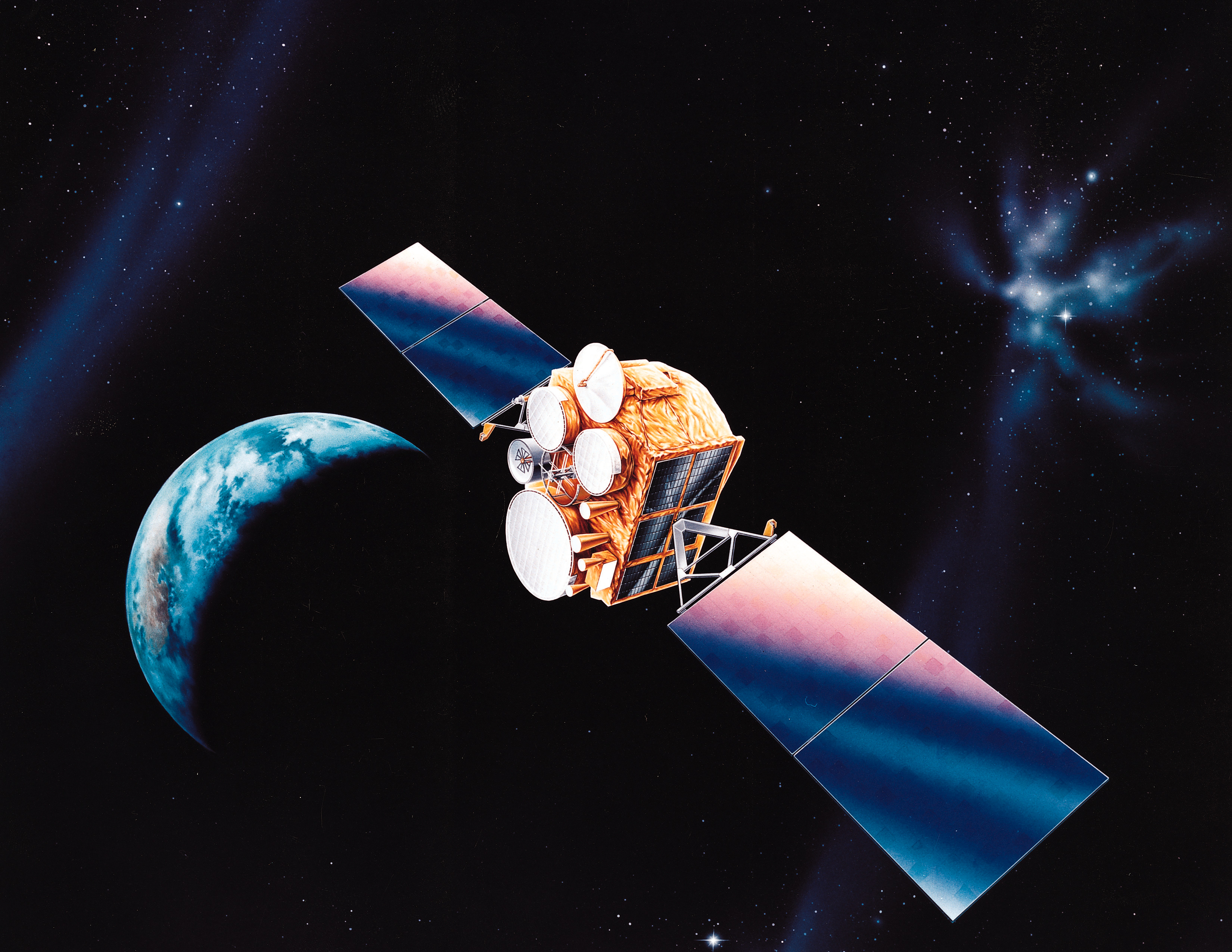|
USA-204
USA-204, or Wideband Global SATCOM 2 (WGS-2) is a United States military communications satellite which is operated by the United States Air Force as part of the Wideband Global SATCOM programme. Launched in 2009, it was the second WGS satellite to reach orbit, and operates in geostationary orbit at a longitude of 60° East (Indian Ocean). Overview The WGS system is a constellation of highly capable military communications satellites that leverage cost-effective methods and technological advances in the communications satellite industry. The WGS system is composed of three principal segments: Space Segment (satellites), Control Segment (operators) and Terminal Segment (users). Each WGS satellite provides service in multiple frequency bands, with the unprecedented ability to cross-band between the two frequencies on board the satellite. WGS augments other satellites. In early 2001, a satellite communications industry team led by Boeing Satellite Systems was selected to devel ... [...More Info...] [...Related Items...] OR: [Wikipedia] [Google] [Baidu] |
USA-211
USA-211, or Wideband Global SATCOM 3 (WGS-3) is a United States military communications satellite operated by the United States Air Force as part of the Wideband Global SATCOM programme. Launched in 2009, it was the third WGS satellite, and final Block I satellite, to reach orbit. It is stationed at 12° West (Atlantic Ocean) in geostationary orbit. Overview The WGS system is a constellation of highly capable military communications satellites that leverage cost-effective methods and technological advances in the communications satellite industry. The WGS system is composed of three principal segments: Space Segment (satellites), Control Segment (operators) and Terminal Segment (users). Each WGS satellite provides service in multiple frequency bands, with the unprecedented ability to cross-band between the two frequencies on board the satellite. WGS augments other satellites. In early 2001, a satellite communications industry team led by Boeing Satellite Systems was select ... [...More Info...] [...Related Items...] OR: [Wikipedia] [Google] [Baidu] |
USA-195
USA-195, or Wideband Global SATCOM 1 (WGS-1) is a United States military communications satellite operated by the United States Air Force as part of the Wideband Global SATCOM programme. Launched in 2007, it was the first WGS satellite to reach orbit. It is stationed at a longitude of 174.8° East ( Ocean Pacific). Overview The WGS system is a constellation of highly capable military communications satellites that leverage cost-effective methods and technological advances in the communications satellite industry. The WGS system is composed of three principal segments: Space Segment (satellites), Control Segment (operators) and Terminal Segment (users). Each WGS satellite provides service in multiple frequency bands, with the unprecedented ability to cross-band between the two frequencies on board the satellite. WGS augments other satellites. In early 2001, a satellite communications industry team led by Boeing Satellite Systems was selected to develop the Wideband Gapfiller ... [...More Info...] [...Related Items...] OR: [Wikipedia] [Google] [Baidu] |
Wideband Global SATCOM
The Wideband Global SATCOM system (WGS) is a high capacity United States Space Force satellite communications system planned for use in partnership by the United States Department of Defense (DoD), Canadian Department of National Defence (DND) and the Australian Department of Defence. The system is composed of the ''Space Segment'' satellites, the ''Terminal Segment'' users and the ''Control Segment'' operators. DoD wideband satellite communication services are currently provided by a combination of the existing Defense Satellite Communications System (DSCS) and Global Broadcast Service (GBS) satellites. According to United Launch Alliance, quoted on ''Spaceflight Now'', "A single WGS spacecraft has as much bandwidth as the entire existing DSCS constellation." WGS operations are currently run by the 4th Space Operations Squadron, out of Schriever Space Force Base, as well as the 53rd Space Operations Squadron. Mission The constellation of WGS satellites increases the commun ... [...More Info...] [...Related Items...] OR: [Wikipedia] [Google] [Baidu] |
Atlas V
Atlas V is an expendable launch system and the fifth major version in the Atlas (rocket family), Atlas launch vehicle family. It was originally designed by Lockheed Martin, now being operated by United Launch Alliance (ULA), a joint venture between Lockheed Martin and Boeing. Atlas V is also a major NASA launch vehicle. It is America's longest-serving active rocket. In August 2021, ULA announced that Atlas V would be retired, and all 29 remaining launches had been sold. , 19 launches remain. Each Atlas V launch vehicle consists of two main stages. The first stage (rocketry), first stage is powered by a Russian RD-180 engine manufactured by NPO Energomash, Energomash and burning kerosene and liquid oxygen. The Centaur (rocket stage), Centaur upper stage is powered by one or two American RL10 engine(s) manufactured by Aerojet Rocketdyne and burns liquid hydrogen and liquid oxygen. The Star 48 upper stage was used on the ''New Horizons'' mission as a third stage. strap-on booster, ... [...More Info...] [...Related Items...] OR: [Wikipedia] [Google] [Baidu] |
Military Communications
Military communications or military signals involve all aspects of communications, or conveyance of information, by armed forces. Military communications span from pre-history to the present. The earliest military communications were delivered by runners. Later, communications progressed to visual and audible signals, and then advanced into the electronic age. Examples from ''Jane's Military Communications'' include text, audio, facsimile, tactical ground-based communications, naval signalling, terrestrial microwave, tropospheric scatter, satellite communications systems and equipment, surveillance and signal analysis, security, direction finding and jamming.IHS Jane'sMilitary Communications Retrieved 2012-01-23. History In past centuries communicating a message usually required someone to go to the destination, bringing the message. Thus, the term ''communication'' often implied the ability to transport people and supplies. A place under siege was one that lost communicat ... [...More Info...] [...Related Items...] OR: [Wikipedia] [Google] [Baidu] |
Ka Band
The Ka band (pronounced as either "kay-ay band" or "ka band") is a portion of the microwave part of the electromagnetic spectrum defined as frequencies in the range 26.5–40 gigahertz (GHz), i.e. wavelengths from slightly over one centimeter down to 7.5 millimeters. The band is called Ka, short for "K-above" because it is the upper part of the original NATO K band, which was split into three bands because of the presence of the atmospheric water vapor resonance peak at 22.24 GHz (1.35 cm), which made the center unusable for long range transmission. The 30/20 GHz band is used in communications satellite uplinks in either the 27.5 GHz and 31 GHz bands, and high-resolution, close-range targeting radars aboard military airplanes. Some frequencies in this radio band are used for vehicle speed detection by law enforcement. The Kepler Mission used this frequency range to downlink the scientific data collected by the space telescope. The designation "Ka ... [...More Info...] [...Related Items...] OR: [Wikipedia] [Google] [Baidu] |
Satellite Bus
A satellite bus (or spacecraft bus) is the main body and structural component of a satellite or spacecraft, in which the payload and all scientific instruments are held. Bus-derived satellites are opposed to specially produced satellites. Bus-derived satellites are usually customized to customer requirements, for example with specialized sensors or transponders, in order to achieve a specific mission. They are commonly used for geosynchronous satellites, particularly communications satellites, but are also used in spacecraft which occupy lower orbits, occasionally including low Earth orbit missions. Examples Some satellite bus examples include: * Boeing DS&S 702 * Lockheed Martin Space Systems A2100 * Alphabus * INVAP ARSAT-3K * Airbus D&S Eurostar * ISRO's I-1K, I-2K, I-3K, I-4K, I-6K, and Indian Mini Satellite bus * NASA Ames MCSB * SSL 1300 * Orbital ATK GEOStar * Mitsubishi Electric DS2000 * Spacecraft bus of the James Webb Space Telescope * SPUTNIX TabletSat * ... [...More Info...] [...Related Items...] OR: [Wikipedia] [Google] [Baidu] |
Solar Array
A photovoltaic system, also PV system or solar power system, is an electric power system designed to supply usable solar power by means of photovoltaics. It consists of an arrangement of several components, including solar panels to absorb and convert sunlight into electricity, a solar inverter to convert the output from direct to alternating current, as well as mounting, cabling, and other electrical accessories to set up a working system. It may also use a solar tracking system to improve the system's overall performance and include an integrated battery. PV systems convert light directly into electricity, and are not to be confused with other solar technologies, such as concentrated solar power or solar thermal, used for heating and cooling. A solar array only encompasses the ensemble of solar panels, the visible part of the PV system, and does not include all the other hardware, often summarized as balance of system (BOS). PV systems range from small, rooftop-mounted or ... [...More Info...] [...Related Items...] OR: [Wikipedia] [Google] [Baidu] |
X Band
The X band is the designation for a band of frequencies in the microwave radio region of the electromagnetic spectrum. In some cases, such as in communication engineering, the frequency range of the X band is rather indefinitely set at approximately 7.0–11.2 GHz. In radar engineering, the frequency range is specified by the Institute of Electrical and Electronics Engineers (IEEE) as 8.0–12.0 GHz. The X band is used for radar, satellite communication, and wireless computer networks. Radar X band is used in radar applications including continuous-wave, pulsed, single- polarization, dual-polarization, synthetic aperture radar, and phased arrays. X band radar frequency sub-bands are used in civil, military, and government institutions for weather monitoring, air traffic control, maritime vessel traffic control, defense tracking, and vehicle speed detection for law enforcement. X band is often used in modern radars. The shorter wavelengths of the X band allow ... [...More Info...] [...Related Items...] OR: [Wikipedia] [Google] [Baidu] |
Apogee Motor
An apogee kick motor (AKM) is a rocket motor that is regularly employed on artificial satellites to provide the final impulse to change the trajectory from the transfer orbit into its final (most commonly circular) orbit. For a satellite launched from the Earth, the rocket firing is done at the highest point of the transfer orbit, known as the apogee. An apogee kick motor is used, for example, for satellites launched into a geostationary orbit. As the vast majority of geostationary satellite launches are carried out from spaceports at a significant distance away from Earth's equator, the carrier rocket often only launches the satellite into an orbit with a non-zero inclination approximately equal to the latitude of the launch site. This orbit is commonly known as a "geostationary transfer orbit" or a "geosynchronous transfer orbit". The satellite must then provide thrust to bring forth the needed delta v to reach a geostationary orbit. This is typically done with a fixed onboa ... [...More Info...] [...Related Items...] OR: [Wikipedia] [Google] [Baidu] |
Defense Satellite Communications System
The Defense Satellite Communications System (DSCS) is a United States Space Force satellite constellation that provides the United States with military communications to support globally distributed military users. Beginning in 2007, DSCS is being replaced by the Wideband Global SATCOM system. A total of 14 DSCS-III satellites were launched between the early 1980s and 2003. Two satellites were launched aboard the Space Shuttle ''Atlantis'' in 1985 during the STS-51-J flight. As of 14 September 2021, six DSCS-III satellites were still operational. DSCS operations are currently run by the 4th Space Operations Squadron out of Schriever Space Force Base. Background DSCS went through three major phases — IDCSP (Interim Defense Communication Satellite Program), DSCS-II, and DSCS-III. Since the first launch, DSCS has been the "workhorse" of military satellite communications. All DSCS III satellites have exceeded their 10-year design life. The National Science Foundation use ... [...More Info...] [...Related Items...] OR: [Wikipedia] [Google] [Baidu] |





